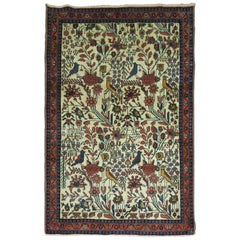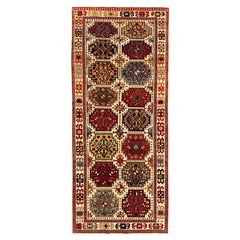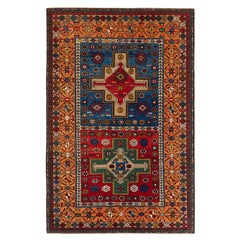Revival Folk Art
Early 20th Century Persian Revival Folk Art
Wool
21st Century and Contemporary Turkish Revival Folk Art
Wool, Natural Fiber, Organic Material
21st Century and Contemporary Turkish Revival Folk Art
Wool, Natural Fiber, Organic Material
21st Century and Contemporary Turkish Revival Folk Art
Wool, Natural Fiber, Organic Material
21st Century and Contemporary Turkish Revival Folk Art
Wool, Natural Fiber, Organic Material
2010s Turkish Revival Folk Art
Wool, Natural Fiber, Organic Material
21st Century and Contemporary Turkish Revival Folk Art
Wool, Natural Fiber, Organic Material
21st Century and Contemporary Turkish Revival Folk Art
Wool, Natural Fiber, Organic Material
21st Century and Contemporary Turkish Revival Folk Art
Wool, Natural Fiber, Organic Material
21st Century and Contemporary Turkish Revival Folk Art
Wool, Natural Fiber, Organic Material
21st Century and Contemporary Turkish Revival Folk Art
Wool, Natural Fiber, Organic Material
21st Century and Contemporary Turkish Revival Folk Art
Wool, Natural Fiber, Organic Material
21st Century and Contemporary Turkish Revival Folk Art
Organic Material, Natural Fiber, Wool
21st Century and Contemporary Turkish Revival Folk Art
Wool, Natural Fiber, Organic Material
21st Century and Contemporary Turkish Revival Folk Art
Wool, Organic Material, Natural Fiber
1940s French Vintage Revival Folk Art
Stone
21st Century and Contemporary Turkish Revival Folk Art
Wool, Natural Fiber, Organic Material
21st Century and Contemporary Turkish Revival Folk Art
Wool, Natural Fiber, Organic Material
21st Century and Contemporary Turkish Revival Folk Art
Wool, Natural Fiber, Organic Material
21st Century and Contemporary Turkish Revival Folk Art
Wool, Natural Fiber, Organic Material
21st Century and Contemporary Turkish Revival Folk Art
Wool, Natural Fiber, Organic Material
21st Century and Contemporary Turkish Revival Folk Art
Wool, Natural Fiber, Organic Material
21st Century and Contemporary Turkish Revival Folk Art
Wool, Natural Fiber, Organic Material
1880s British Antique Revival Folk Art
Oak
21st Century and Contemporary Turkish Revival Folk Art
Wool, Natural Fiber, Organic Material
21st Century and Contemporary Turkish Revival Folk Art
Wool, Natural Fiber, Organic Material
21st Century and Contemporary Turkish Revival Folk Art
Wool, Natural Fiber, Organic Material
1970s Vintage Revival Folk Art
Brass
20th Century Persian Revival Folk Art
Wool
1870s Italian Antique Revival Folk Art
Walnut
1890s European Antique Revival Folk Art
Oak
1940s French Vintage Revival Folk Art
Stone
Late 19th Century Italian Antique Revival Folk Art
Iron
21st Century and Contemporary Indian Revival Folk Art
Wool
Early 20th Century Italian Revival Folk Art
Silk
21st Century and Contemporary Turkish Revival Folk Art
Wool, Natural Fiber, Organic Material
21st Century and Contemporary Turkish Revival Folk Art
Wool, Natural Fiber, Organic Material
Early 20th Century American Revival Folk Art
Wool
Mid-19th Century French Antique Revival Folk Art
Boxwood
1940s French Vintage Revival Folk Art
Stone
20th Century Persian Revival Folk Art
Wool
19th Century American Antique Revival Folk Art
Wool
21st Century and Contemporary Indian Revival Folk Art
Wool
21st Century and Contemporary Indian Revival Folk Art
Other
Early 20th Century Spanish Revival Folk Art
Wood, Walnut
21st Century and Contemporary Indian Revival Folk Art
Wool
Mid-20th Century Revival Folk Art
Wood
21st Century and Contemporary Indian Revival Folk Art
Wool
21st Century and Contemporary Indian Revival Folk Art
Wool
21st Century and Contemporary Indian Revival Folk Art
Wool
21st Century and Contemporary Italian Revival Folk Art
Platinum, Gold
Early 20th Century French Revival Folk Art
Pine
1880s Austrian Antique Revival Folk Art
Ceramic
Mid-20th Century French Revival Folk Art
Canvas, Paint
Early 20th Century Austrian Revival Folk Art
Canvas, Paint
21st Century and Contemporary Indian Revival Folk Art
Wool
21st Century and Contemporary Indian Revival Folk Art
Wool
21st Century and Contemporary Indian Revival Folk Art
Wool





